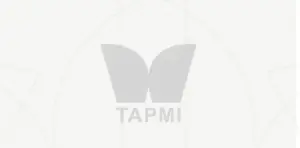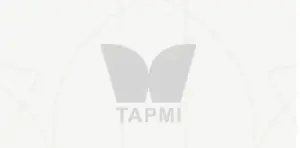The students of TAPMI and Mr. Pramod Shah had a discussion on the challenges faced by Human Resources department and incorporation of changing trends like Artificial Intelligence in the same. The discussion opened with Mr. Shah asking the students if they had a direction in mind in which the discussion should go. After enlisting a few questions from the students, the interaction began with the 3 biggest challenges faced by HR which are- knowing your business, willingness to take up non-conventional roles and the willingness to adapt to a changing approach in the domain. If one doesn’t know what the business is about, the solutions are given out in isolation. The challenges may seem easily combatable to one, but they’re harder to overcome than one can imagine.
Enlightening the students about HR practices in the banking sector, the facilitator of the discussion said that, “70% of the HR role in banking revolves around talent acquisition and manpower planning. This may also include business partnering. Remaining 20% comprises of employee engagement and the last 10% is performance management.”
The discussion then moved to performance management. One of the students wanted to know his opinion on the removal of bell curve from the companies during performance review, to which he said that the bell curves restrict the flexibility, “Earlier, if you had a certain rating, the increment was hard-coded. Say you got a rank 2, that’d mean you’d get a 10% increment. But now, doing away with the bell curve has given the managers the flexibility to rate two people with the same ranking and give two different increments. So the increments are now based on performances, and not how much the managers wanted to give out.”
Contrasting between IT and Finance sector, he commented, “it was a completely new ball-game,” he added, “but if you think you can’t change between two different sectors-it’s not the case. Change is possible. However, one person who’s suitable for one sector, might not be suitable for the other one.”
“The industries expect you to know business,” he advised the students to read about the firm before entering into one. “Do research,” he added. Stressing on the importance of research, he also mentioned about the seriousness one portrays about oneself if they’re well prepared with data about the role they’re willing to take up and the organization they’re applying for.
So, will AI take our jobs away? “No. If you call your HR as your art, AI-ML is your science,” he said. The tools are just to make the job easier. “And as students, you should start getting acquainted with Analytics,” he advised.
Commenting on talent acquisition part of Human resources, he said that one should start by knowing if you’re hiring for front-line hiring, and on which level of management.
“On average, your role would be changing every 2 years, and you don’t need a promotion for that. So you should know various aspects of your domain to tackle your ever changing role,” he advised the cohort before ending the very interactive session.








